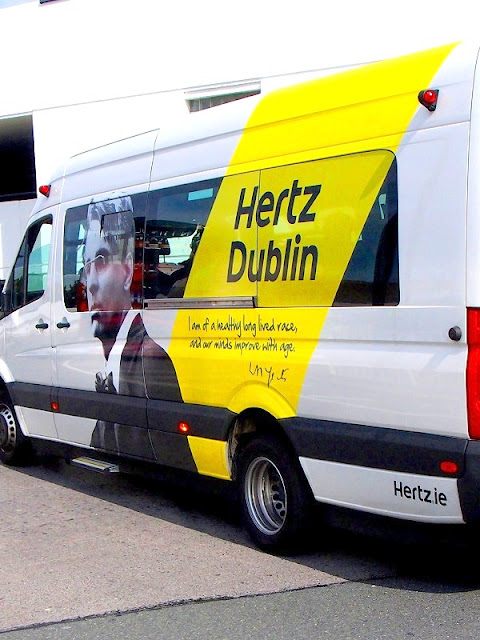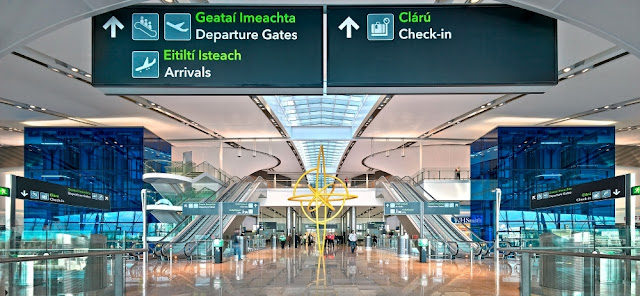The Irish Todayでは、10月多くの小泉八雲関連イベントが開催されるアイルランドよりリポートをお届けする予定です。
Live report from Ireland in October.
アイルランド旅行のタイミング
夏のアイルランド訪問は冬と比較して大分違います。天候はさておき、料金、営業の有無、混雑度がポイントです。
一般的に、夏は航空料金、カーレンタル料、ホテル代が最も高く、最も混雑する時期です。
ただし、日が長く(6時日の出、10時日の入り)、天気も穏やかであり、全ての観光施設とB&Bが営業しています。
冬は航空料金、ホテル代が最低水準となります。しかし、雨風に見舞われ、多くの地方観光地や、かなりの割合の地方のB&Bやレストランが休業となります。
総合的に考えると、ベストな旅行シーズンは春と秋でしょう。天気は良し悪しの中間ですが、ハイシーズンよりお得な料金で、混雑度もまだ少なくありません。
天気
雨はアイルランドの天気には付き物ですが、いつもお日様が少し顔を出しそうな状態です。天気が良い時間も悪い時間も大抵はたったの数時間、または数分と、まちまちです。
一年を通じて、アイルランドは肌寒いため、上着を用意しておきましょう。
冬は天候が厳しく、風が大西洋から絶え間なく吹きつけ、強風は当たり前です。しかし、深い雪はめったになく、気温も氷点下を下回ることはほとんどありません。
実際、アイルランドは穏やかな気温の土地です。1月2月は霜が降りますが、雪はめったにありませんし、8月はとても温かいですが暑くなることはほとんどありません。アイリッシュの人たちにとって、20度以上は“焼けつくような暑さ”で、1度以下は骨まで凍りつく寒さです。アイルランドの天気に関する詳しい情報は、こちらのサイトをご覧ください。
祝祭日
アイルランド共和国の祝祭日は下記の通りです。
元旦(1月1日)、セント・パトリックスデー(3月17日)、イースターマンデー(移動祝日)、メーデー(5月1日)、6月・8月の第一月曜日(夏のバンクホリデー)、10月の最終月曜日(秋のバンクホリデー)、クリスマス(12月25日)、聖スティーブンスデー(12月26日)。グッドフライデー(イースター前の金曜日)が大抵は祝日となりますが、法令化はされていません。
北アイルランドの祝祭日スケジュールはアイルランド共和国と同じですが、いくつか例外があります。夏のバンクホリデーは5月・8月の最終月曜日、ボイン川の戦いの戦勝記念日=オレンジメンズデー(7月12日)、クリスマス後のボクシングデー(12月26日)
アイルランドも北アイルランドも、祝日が週末に重なった場合は、翌週の月曜日が祝日となります。
(注記:この情報は記事の発行時点でのものであり、予告なく変更となる場合があります。旅行を計画する前に、全てのレートや詳細を会社へ直接ご確認願います。)
A visit to Ireland in the summer is very
different from a trip in the winter. Apart from climatic considerations, there
are the issues of cost, closures, and crowds. Generally speaking, in summer,
airfares, car-rental rates, and hotel prices are highest and crowds at their
most intense. But the days are long (6am sunrises and 10pm sunsets), the
weather is warm, and every sightseeing attraction and B&B is open. In
winter, you can get rock-bottom prices on airfare and hotels. But it will rain
and the wind will blow, and many rural sights and a fair proportion of the
rural B&Bs and restaurants will be closed.
All things considered, we think the best
time to visit is in spring and fall, when weather falls in between bad and
good, but you get lower-than-high-season prices and the crowds have yet to
descend.
Weather
Rain is the one constant in Irish weather,
although a bit of sunshine is usually just around the corner. The best of times
and the worst of times are often only hours, or even minutes, apart. It can be
chilly in Ireland at any time of year, so think layers when you pack.
Winters can be brutal, as the wind blows in
off the Atlantic with numbing constancy, and gales are common. But deep snow is
rare, and temperatures rarely drop much below freezing. In fact, Ireland is a
fairly temperate place: January and February bring frosts but seldom snow, and
July and August are very warm, but rarely hot. The Irish consider any
temperature over 68°F (20°C) to be "roasting," and below 34°F (1°C)
as bone chilling. For a complete online guide to Irish weather, consult http://www.met.ie/.
Holidays
The Republic observes the following
national holidays: New Year's Day (Jan 1); St. Patrick's Day (Mar 17); Easter
Monday (variable); May Day (May 1); first Mondays in June and August (summer
bank holidays); last Monday in October (autumn bank holiday); Christmas (Dec
25); and St. Stephen's Day (Dec 26). Good Friday (the Fri before Easter) is
mostly observed, but not statutory.
In the North, the schedule of holidays is
the same as in the Republic, with some exceptions: the North's summer bank
holidays fall on the last Monday of May and August; the Battle of the Boyne is
celebrated on Orangeman's Day (July 12); and Boxing Day (Dec 26) follows
Christmas.
In both Ireland and Northern Ireland,
holidays that fall on weekends are celebrated the following Monday.
Note: This information was accurate when it
was published, but can change without notice. Please be sure to confirm all
rates and details directly with the companies in question before planning your
trip.
















































































































